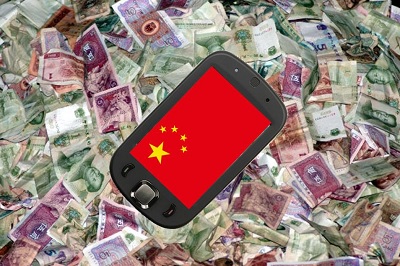Denny |
September 7, 2016
Emerging markets are continuing to exhibit positive growth, but as a whole it is declining in developed regions.
According to the Worldwide Quarterly Mobile Phone Tracker from the International Data Corporation (IDC), smartphone sales are declining as expected. Many forecasts pointed to an overall slowdown of mobile phone sales in 2016. This is linked to a reduction in sales in developed regions.
Despite the positive growth that continues in emerging markets, it isn’t enough to keep the entire marketplace’s pace.
The report showed that much of the smartphone sales currently occurring in developed regions is in replacements. The rate of new users has decreased substantially as penetration within these populations is now very high. The report predicted a 1.6 year over year growth of smartphone shipments in 2016. This, upon the shipment of 1.46 billion units by the end of the year. That may appear to be a healthy number, but it is a fraction of what it was last year. In 2015, the year over year growth rate for smartphone shipments was 10.4 percent.
As a whole, developed markets are expected to see a negative growth rate in smartphone sales.
 The report took the United States, Canada, Western Europe and Japan into its definition of developed markets. Within that region, the IDC predicts a -0.2 percent compound annual growth rate (CAGR). Emerging markets were made up of Central and Eastern Europe, the Asia Pacific Region (except for Japan), Africa, the Middle East and Latin America. They are expected to see a 5.4 percent CAGR throughout the forecast period of 2015 to 2020.
The report took the United States, Canada, Western Europe and Japan into its definition of developed markets. Within that region, the IDC predicts a -0.2 percent compound annual growth rate (CAGR). Emerging markets were made up of Central and Eastern Europe, the Asia Pacific Region (except for Japan), Africa, the Middle East and Latin America. They are expected to see a 5.4 percent CAGR throughout the forecast period of 2015 to 2020.
Senior IDC research analyst at the Worldwide Quarterly Mobile Device Trackers, Jitesh Ubrani, said “Growth in the smartphone market is quickly becoming reliant on replacing existing handsets rather than seeking new users.” Ubrani also stated that from the point of view of the tech side, innovation is “in a lull.” Consumers have greatly reduced their inclination to purchase the latest device with all the newest bells and whistles. Instead, they are satisfied with mobile devices that are “good enough.”
Telcos have been working hard to breathe life back into their smartphone sales. Programs such as trade-ins and buy-backs are geared toward shortening lifecycles and increasing the inclination to purchase early replacements.
BWild |
September 6, 2016
This makes the company the latest smartphone maker to step into that Chinese market.
Xiaomi Mi Pay has launched in China. This has added yet another mobile payments option for consumers in the country. It also means that Xiaomi has become the latest in a series of smartphone makers offering a mobile wallet in China.
The Mi Pay mobile payments service is a contactless payments system using NFC technology.
So far, Xiaomi Mi Pay supports debit cards from 12 banks and credit cards from 20 banks. These include China Merchants Bank, China Construction Bank, Bank of Communications, Industrial and Commercial Bank of China, and Bank of China, among others. According to Xiaomi, a smartphone user will be able to add up to eight cards to their mobile wallet.
 Lei Jun, CEO and founder of the company, said “We believe that Mi Pay will be a key driving force in promoting the development of China’s mobile payments industry, and deliver much more convenience to our users.”
Lei Jun, CEO and founder of the company, said “We believe that Mi Pay will be a key driving force in promoting the development of China’s mobile payments industry, and deliver much more convenience to our users.”
Xiaomi Mi Pay jointly launched with the China UnionPay state-run nationwide mobile payments system.
There are already a number of large scale mobile payments systems that have launched in China and around the world. Among the biggest names include Apple Pay, Samsung Pay and WeChat Pay from Tencent, as well as Alipay from Alibaba. These are all available in the largest smartphone market in the world, which is the Chinese marketplace.
Mi Pay users will also be able to take advantage of added mobile wallet features. Aside from debit and credit cards, they can also add public transportation cards. This way, they can avoid the need to dig a card out of a wallet or bag when they likely already have their smartphones in their hands.
In order to use Xiaomi Mi Pay, the smartphone must be near field communication (NFC) enabled. The NFC technology makes it possible for the device to communicate the necessary information with either a tap against the reader or by waving the device in front of it. In the name of mobile security, the NFC technology using smartphones underwent tests to ensure they could withstand a range of non-invasive and invasive attacks to break through encryption and reach private data. Moreover, this mobile wallet uses multiple authentication mechanisms to verify transactions.
 The report took the United States, Canada, Western Europe and Japan into its definition of developed markets. Within that region, the IDC predicts a -0.2 percent compound annual growth rate (CAGR). Emerging markets were made up of Central and Eastern Europe, the Asia Pacific Region (except for Japan), Africa, the Middle East and Latin America. They are expected to see a 5.4 percent CAGR throughout the forecast period of 2015 to 2020.
The report took the United States, Canada, Western Europe and Japan into its definition of developed markets. Within that region, the IDC predicts a -0.2 percent compound annual growth rate (CAGR). Emerging markets were made up of Central and Eastern Europe, the Asia Pacific Region (except for Japan), Africa, the Middle East and Latin America. They are expected to see a 5.4 percent CAGR throughout the forecast period of 2015 to 2020.
 Lei Jun, CEO and founder of the company, said “We believe that Mi Pay will be a key driving force in promoting the development of
Lei Jun, CEO and founder of the company, said “We believe that Mi Pay will be a key driving force in promoting the development of 